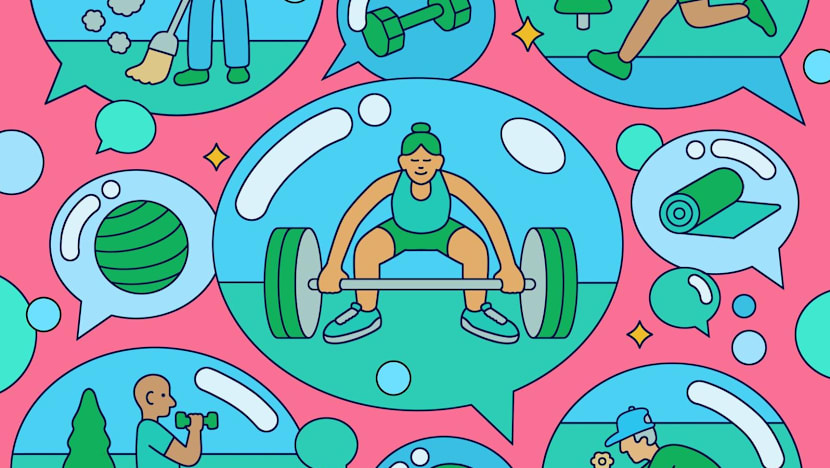Health
6 Daily Habits to Prevent Injury, According to Experts

Physical therapists emphasize that daily habits significantly influence injury risks. Many individuals find themselves in a therapist’s office due to extremes in physical activity, whether from excessive movement or prolonged inactivity. According to John Gallucci Jr., a physical therapist based in New Jersey, the underlying cause of such injuries often stems from accumulated daily behaviors. He notes, “I just wish people would understand that too much too quickly causes injury.”
To maintain physical health and avoid injuries, experts recommend incorporating the following six habits into daily routines.
1. Treat Your Physical Therapist Like Your Dentist
Most individuals wait until pain arises before consulting a physical therapist. Amy Kimball, a physical therapist and assistant professor at the University of Iowa, advocates for annual checkups to assess physical health and receive tailored advice. Many insurance plans do not require a doctor’s referral for this type of consultation. For those preparing for events like a 5K run, a physical therapist can evaluate running form and suggest appropriate strength training routines. Heather McGill, a physical therapist in San Francisco, adds that therapy plans should evolve as individuals’ strengths and weaknesses change over time.
2. Practice High-Intensity Interval Training in Moderation
High-Intensity Interval Training (HIIT) has gained popularity in recent years, but excessive practice can lead to injuries and fatigue. Julia Rosenthal, a physical therapist and orthopaedic specialist in New York City, warns against participating in boot camps five to seven times a week, stating, “You’re persistently stressing out your nervous system without any ability to recover.” She advises limiting high-intensity sessions to a few days each week to allow for proper recovery.
3. Build Gradually When Starting New Activities
Transitioning from a sedentary lifestyle to a vigorous exercise regimen can prove hazardous. Alyssa Skala, a professor of physical therapy at Wash U Medicine in St. Louis, frequently observes injuries such as ruptured Achilles tendons when individuals suddenly engage in intense activities. Her recommendation is to increase activity levels gradually, following a rule of thumb of a 10 percent increase per week in terms of distance, frequency, or weight. “Let your joints, your muscles, and your flexibility adjust,” Dr. Skala advises.
4. Utilize Your Non-Dominant Hand
To reduce strain on dominant muscles, physical therapists like McGill suggest incorporating the non-dominant hand into everyday tasks. For instance, right-handed individuals can hold their phone or mouse with their left hand. This practice can help distribute physical stress, particularly for those suffering from wrist or elbow pain, common among golfers.
5. Approach Household Chores Like a Workout
Physical therapists observe a spike in injuries during seasonal chores, particularly those involving repetitive movements such as climbing ladders. Gallucci recalls a recent case involving a friend who experienced pain after spending a day planting flowers. He recommends treating household tasks as workout sessions, spreading them over several days to allow the body to adapt. Planning work sessions for no more than one or two hours at a time, with breaks, can mitigate the risk of injury.
6. Don’t Rely Solely on Stretching
While stretching can provide temporary relief, many experts caution against relying on it to alleviate muscle tightness. Dr. Rosenthal notes that stretching might not address the root cause of discomfort and can sometimes exacerbate tightness. Instead, she suggests that individuals experiencing persistent muscle tightness consult a physical therapist or focus on strength training to improve overall stability and support.
By adopting these six habits, individuals can enhance their physical well-being and reduce the likelihood of injury. The insights shared by these professionals highlight the importance of proactive care and balanced activity in maintaining a healthy lifestyle.
-

 Business5 months ago
Business5 months agoKenvue Dismisses CEO Thibaut Mongon as Strategic Review Advances
-

 Lifestyle4 months ago
Lifestyle4 months agoHumanism Camp Engages 250 Youths in Summer Fest 2025
-

 Sports4 months ago
Sports4 months agoDe Minaur Triumphs at Washington Open After Thrilling Comeback
-

 Sports5 months ago
Sports5 months agoTupou and Daugunu Join First Nations Squad for Lions Clash
-

 Top Stories5 months ago
Top Stories5 months agoColombian Senator Miguel Uribe Shows Signs of Recovery After Attack
-

 World5 months ago
World5 months agoASEAN Gears Up for Historic Joint Meeting of Foreign and Economic Ministers
-

 Health4 months ago
Health4 months agoNew Study Challenges Assumptions About Aging and Inflammation
-

 Business5 months ago
Business5 months agoOil Prices Surge Following New EU Sanctions on Russia
-

 Entertainment4 months ago
Entertainment4 months agoDetaşe-Sabah Violin Ensemble Captivates at Gabala Music Festival
-

 Entertainment4 months ago
Entertainment4 months agoBaku Metro Extends Hours for Justin Timberlake Concert
-

 Top Stories5 months ago
Top Stories5 months agoRethinking Singapore’s F&B Regulations Amid Business Closures
-

 Business5 months ago
Business5 months agoU.S. House Approves Stablecoin Bill, Sends to Trump for Signature









